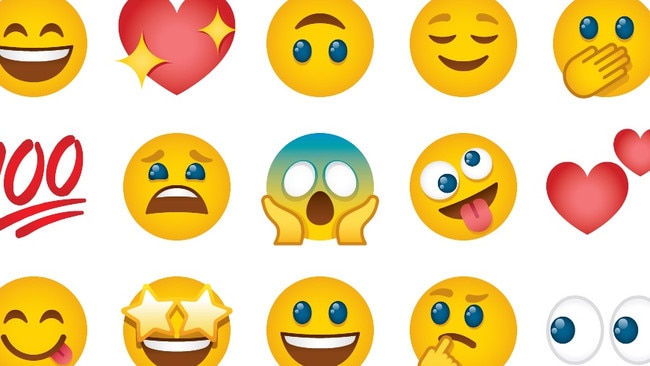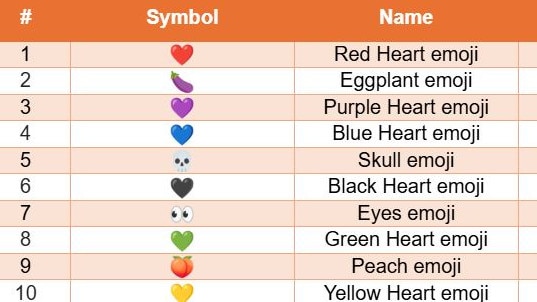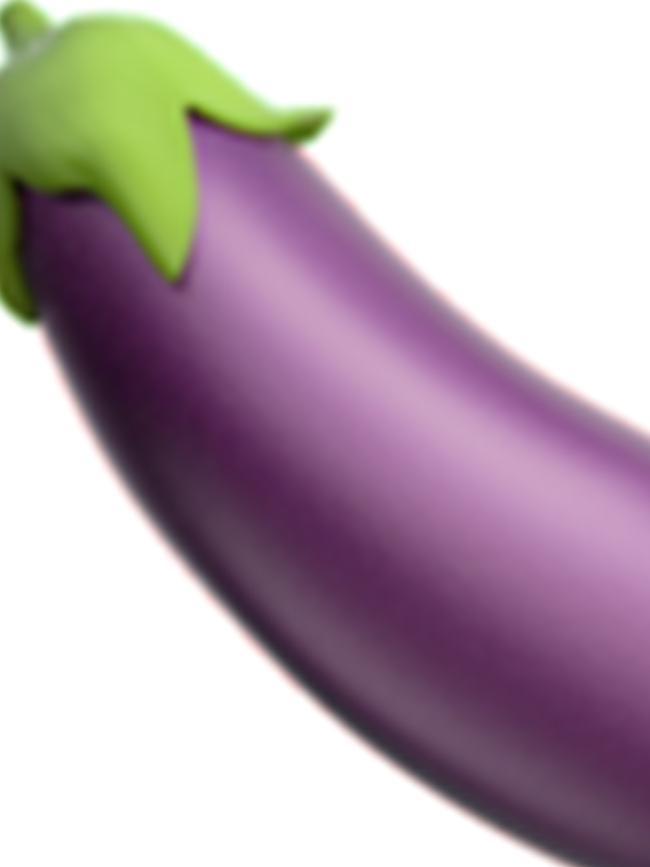Listed: The top 10 innocent emojis that receivers most overthink as revealed by new national study
A national analysis reveals which commonly-used simple emojis most confuse receivers with red, purple and blue hearts among the top 10 searches.

Lifestyle
Don't miss out on the headlines from Lifestyle. Followed categories will be added to My News.
You might think the sentiment conveyed by a text message heart emoji would be self-explanatory but new research finds receiving the affectionate symbol perplexes many.
In fact, the loved-up emoji baffles Australians more than any other commonly-used digital image, especially when it’s sent in red, purple and blue with coy receivers puzzled – and prone to overthink – its intention, no matter which state or territory they reside.
The national study finds each month there are almost 3000 searches by people wanting to discover more about just what receiving a red heart means.

The risqué eggplant, commonly used to represent a penis in sexting conversations, ranked second with more than 2,000 inquiries, ahead of the purple heart, blue heart and skull emojis.
Rounding out the top 10 most mystifying emojis in the analysis of almost 130 text icons by Google Keyword Planner for smartphone retailer Mobile Federation are the black heart, eyes, green heart, peach and yellow heart.
The federation’s Sydney-based CEO Shing Phang said while traditionally a symbol linked to romantic connotations, heart emojis in different colours increasingly conveyed a range of reactions and sentiments.

“Australians seem to be hopeless romantics … the heart emoji clearly makes (them) overthink whether there might be more to it,” he said.
“(A heart) does not always necessarily mean any romantic affection … (it can be) a fast reaction representing mere agreement, a slightly more enthusiastic thumbs up alternative … (even) have passive-aggressive tones.
“The purple heart emoji usually reflects a less romantically-charged alternative … the blue serves a similar purpose but can also imply a feeling of sadness, or feeling ‘blue’.”
The black heart is described as “a more masculine alternative to the red emoji … which can symbolise grief ” while green is deemed to be “one of the most innocent and platonic alternatives”, also linked to nature or health.
Meanwhile, the skull emoji, once a symbol of death and terror, now typically replace the humorous phrase “dying with laughter”.


“It is to Gen Z what ‘LOL’ (laugh out loud) … was for millennials,” Mr Phang said.
A state-by-state breakdown showed only slight variations on how emojis are received in different regions, only the eggplant emoji notably unnerved people much less in the Northern Territory where it drops to fourth spot from second nationally.
“Its use in racier messages might not need much research but a more ambiguous context clearly makes Aussies do a double take,” Mr Phang said.





